First Impressions: Vive Flow
We go hands-on with the VR glasses
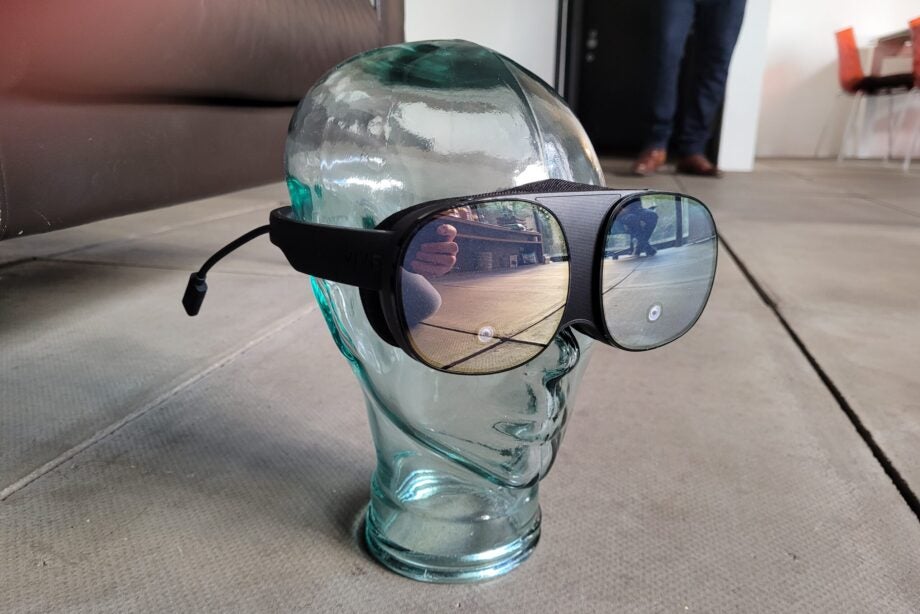
First Impressions
Vive Flow is a fascinating new step for virtual reality, packing the technology into a pair of glasses for a more portable and hassle-free experience. The design and built-in screen are both superb, but the reliance on the power of your smartphone leaves me unconvinced that there’s a killer app or use case that can justify the steep price.
Availability
- UKRRP: £499
- USARRP: $499
- EuropeRRP: €549
Key Features
- Lightweight design:With all the tech crammed into a pair of glasses, the Flow only weighs 189g.
- Requires an Android smartphone:The Flow links up to an Android smartphone via Bluetooth in order to run apps and games.
- 3.2K screen with 75Hz refresh rate:Features an impressively sharp display despite its small size.
Introduction
HTC has announced a pair of VR glasses called the Vive Flow. They work just like your average virtual reality headset with a built-in screen and head-tracking sensors, but in a mind-bogglingly compact device that can fit on your face as easily as a pair of glasses.
Unlike the high-end VR headsets that HTC has on offer, the Vive Flow does not require a gaming PC to function. Instead, the device can link up to your Android smartphone over Bluetooth in order to run a range of apps and games.
Of course, the dependency on a smartphone mean the Vive Flow are limited in terms of what software they can run; think meditation apps and video streaming services rather than blockbuster VR games. This makes these new VR glasses more akin to the now defunct Oculus Go rather than an Oculus Quest 2 or Vive Cosmos.
The Vive Flow will launch globally on 14 October, with a steep starting price of £499 / €549 / $499. But is it worth your hard-earned cash? HTC invited me to try out the Vive Flow ahead of launch to see what these VR glasses have to offer. So keep reading on for my first impressions.
Design
- Packed into a pair of glasses that weigh just 189g
- Not enough room for a big battery
- Features a sharp 3.2K display with 75Hz refresh rate
When I say the Vive Flow are a pair of VR glasses, I really wasn’t kidding. This wearable is far lighter and smaller than even the most portable VR headset, weighing just 189g which HTC proudly claims is just as light as a chocolate bar.
It really was a delight being able to easily slot these glasses on my face rather than have to strap on a big headset that applies uncomfortable weight to my neck. HTC has also built in adjustable diopter dials, which means most people won’t need to wear glasses here, ensuring the Flow can sit flush against your face.
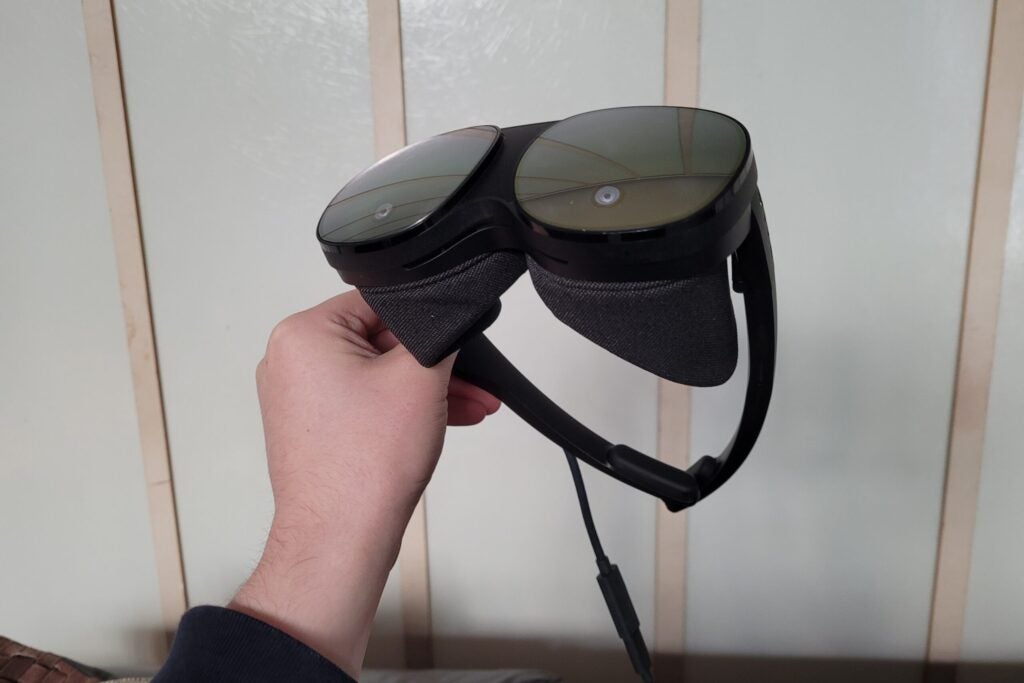
An active cooling system helps to pull warm air away from your face, which is an important inclusion, as I’ve often come away from other VR headsets with a sweaty face, and would prefer that didn’t happen in a public setting.
My session with the Vive Flow only lasted for a couple of hours, but they were very comfortable to wear for that time period. I did have to readjust the glasses on my face to ensure a clear view every now and then, but I reckon that’s got more to do with the face mask I was required to wear underneath the Flow for Covid protocol – that obviously won’t be an issue for the end user.
The glasses have their own battery cell built in, but with HTC hesitant to reveal the battery life, I’m concerned they won’t last very long independently. HTC will at least offer a portable 10,000mAh power bank as a separate accessory that can plug into the glasses – even while you’re using them – to push the stamina up to 5 hours. But that will drive up the cost even further, despite an already expensive price point.
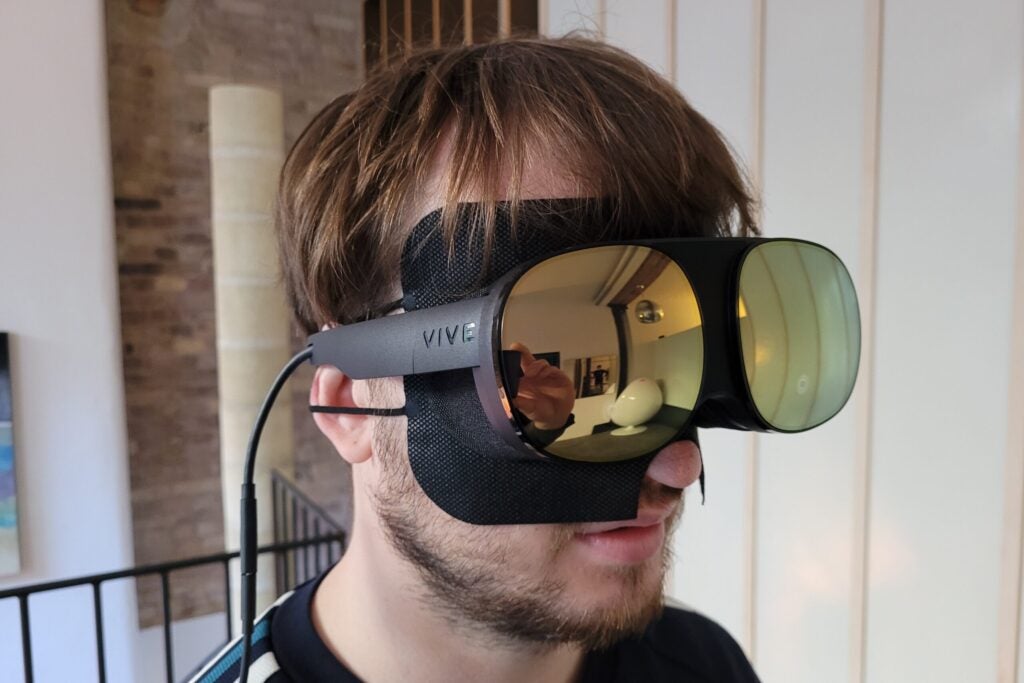
While that’s going to be a very hard price to swallow considering the Flow’s performance limitations, I am very impressed by the display specs. HTC claims it features a 3.2K resolution and a 75Hz refresh rate. The screen certainly looked great while I was using the Flow, with images being presented with sharp detail and bold colours.
The screen even has a 100-degree field of view, creating an impressively immersive experience once the glasses are sitting at the top of your nose.
When watching Disney Plus with the glasses, it looked as if I was sitting in a cinema, with Marvel’s Black Widow displayed on a massive screen. I can see this being a far more enjoyable way to watch a film on the go than using the display of your smartphone or laptop.
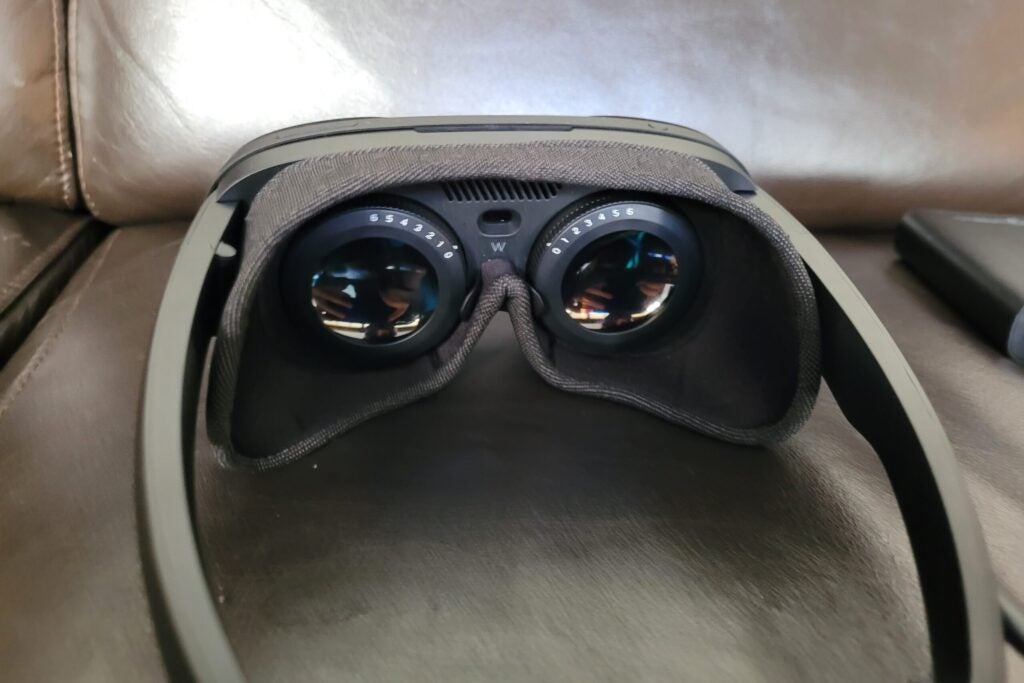
You even get 3D spatial sound being blasted out of the glasses. Of course, if you don’t want to disturb people in your vicinity, you can connect the Flow up to your own Bluetooth headphones instead.
I’m really excited by the design of the Vive Flow – the glasses are far more ergonomic than a big headset and it feels far less embarrassing to have them strapped to your head, even if they do make it look like I’m a character from Psychonauts 2. This could well be what the future of VR looks like.
Performance
- Needs to be connected to a smartphone to function
- Limited to basic apps and games
- Aimed at lifestyle rather than gaming
There’s an obvious issue with the Vive Flow though, as the compact design means you can’t fit a powerful chip inside like you can with the Oculus Quest. This means it needs to wirelessly connect to your smartphone in order to function. Limited to the power of your phone, you won’t be able to play VR classics like Superhot VR and Beat Saber.
To be fair to HTC though, it isn’t positioning the Vive Flow as a rival to the Oculus Quest. In fact, it’s not even considering it as a gaming platform. Instead, HTC is championing fitness and wellbeing apps as the main use case of the Vive Flow.
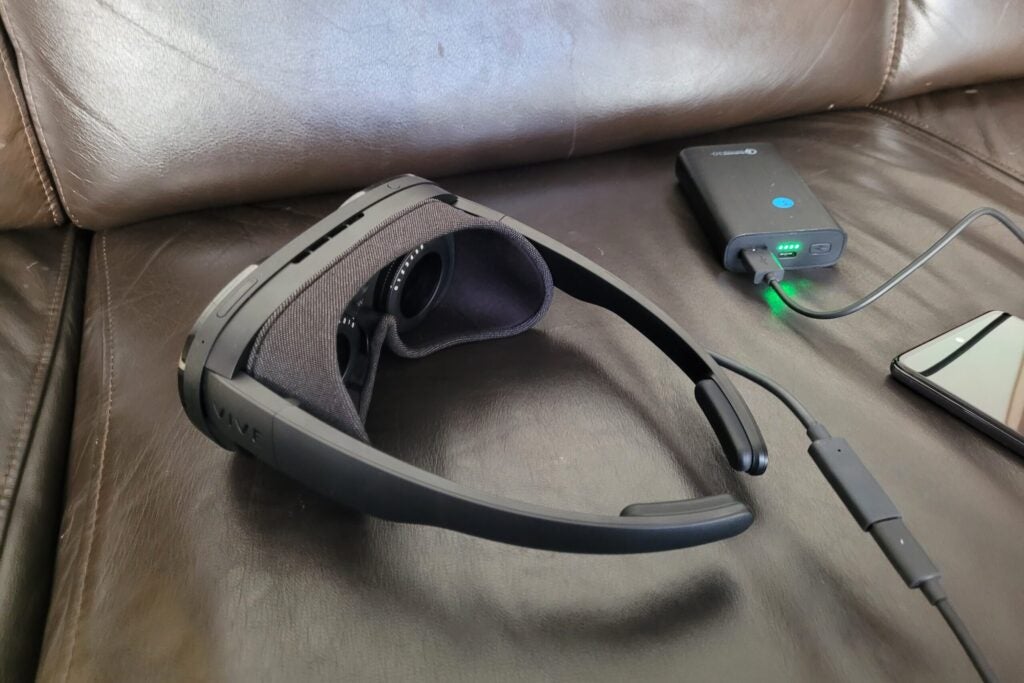
During my hands-on experience, I tried out a VR app called TRIPP. This was incredibly immersive, with bright lights pulsating around me and serenic music flooding my ears. It was very easy to forget that I was sitting in an office room in London, enabling me to clear my mind and focus on my breathing.
It was certainly a relaxing experience, but I’m still unconvinced that these kinds of apps are enticing enough to justify the high £499 / €549 / $499 price. So what else can you do with the Vive Flow?
During my time with the VR glasses, I jumped into an office simulation, played a basic VR game where I blasted cannonballs at pirate ships by aiming with my head, and watched a few movies via Disney Plus.
I was pretty underwhelmed with the first two experiences, but I can definitely see a use case for streaming video. You can essentially jump into your private cinema with whichever film or TV show that’s offered by the likes of Netflix and Disney Plus. I can see myself using this if someone is hogging the house TV or I’m stuck on a long flight.
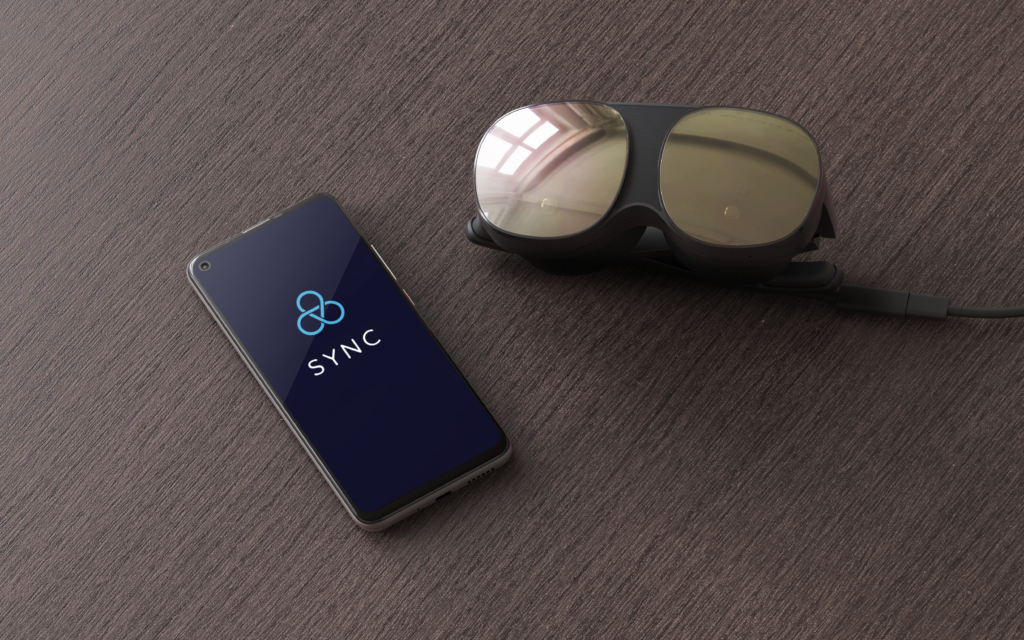
Even better, the Vive Flow can mirror content on your phone. So if you want to watch YouTube, Tik Tok or even your Instagram feed, then it should all be good to go. I’m particularly keen to see the likes of Xbox Game Pass and GeForce Now running on the Vive Flow; HTC confirmed that this is possible, but unfortunately didn’t have it set up for me to try out at the hands-on event.
However, there’s a big fly in the ointment for phone mirroring, as only certain smartphones are supported: iPhones are a no go, and so are Android handsets that don’t support HDCP 2.2. HTC tells me that this rules out OnePlus and Xiaomi phones. This means you really need to double check whether your handset supports phone mirroring before committing to a purchase, otherwise you’re arguably missing out on the Flow’s best feature.
Controls
- No dedicated controllers bundled in
- Can use your phone to point, click and scroll
The Vive Flow does not come with any controllers, instead using your smartphone to navigate through menus. It’s a smart design choice by Vive, especially since it’s pitching these VR glasses as something you can use on the go.
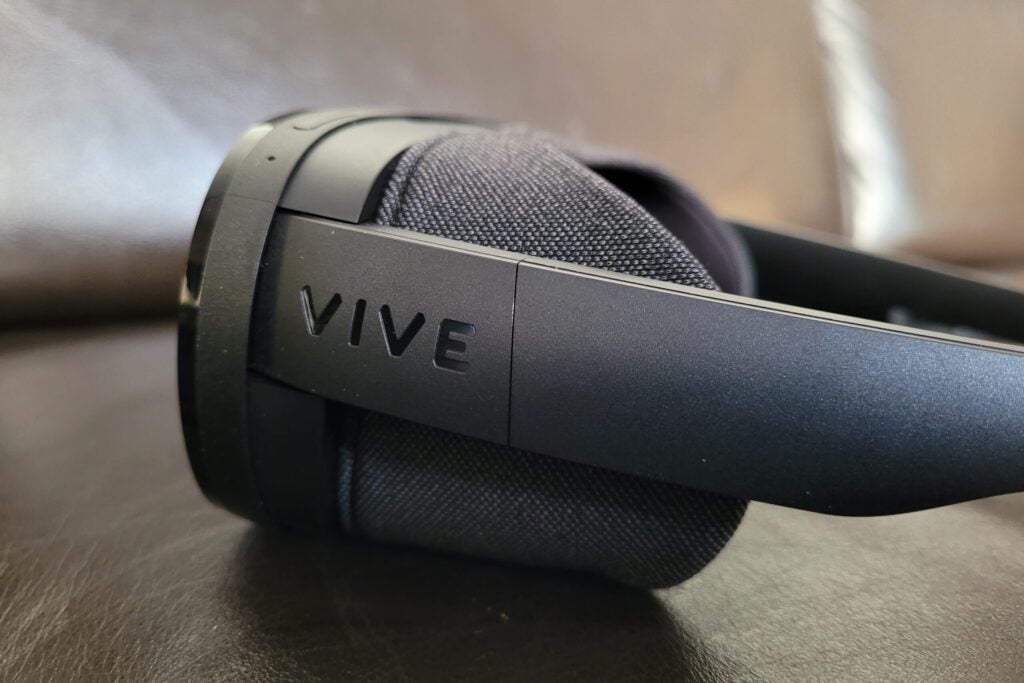
You can make selections with your phone by pointing and clicking, while even swiping down on your phone screen to scroll through menus. Tapping the top of your phone screen will also bring up the settings tab so you can easily jump back to the homescreen.
Of course, it’s not as intuitive as an actual VR controller like the Oculus Touch or the Vive wand, but it does the job competently for lifestyle apps.
There were a couple of technical hiccups that stopped the Flow responding to the inputs on my phone, but HTC was keen to remind me that this is just a beta model. I’ll have to wait and see until the final launch product whether all of the software kinks have been ironed out.
Initial verdict
The Vive Flow is an impressive technological feat, seeing all the specs required for virtual reality boiled down into a pair of glasses that are comfortable to wear for long stretches of time. VR glasses are destined to replace the clunky headsets, and this looks to be our first glimpse of such technology.
However, given the Flow’s performance limitations, I’m unconvinced that there’s enough on offer here to justify that incredibly expensive price. The Oculus Go didn’t see much success by chasing the lifestyle crowd, and I’m unconvinced the Vive Flow will fare much better, even if it is more portable.
FAQs
No, the Vive Flow links to your smartphone over Bluetooth instead.
No, the Flow will only support Android phones at launch.
No, the Vive Flow lack the power to challenge the Quest, and is being pitched as a device for meditation and wellbeing instead of gaming.








